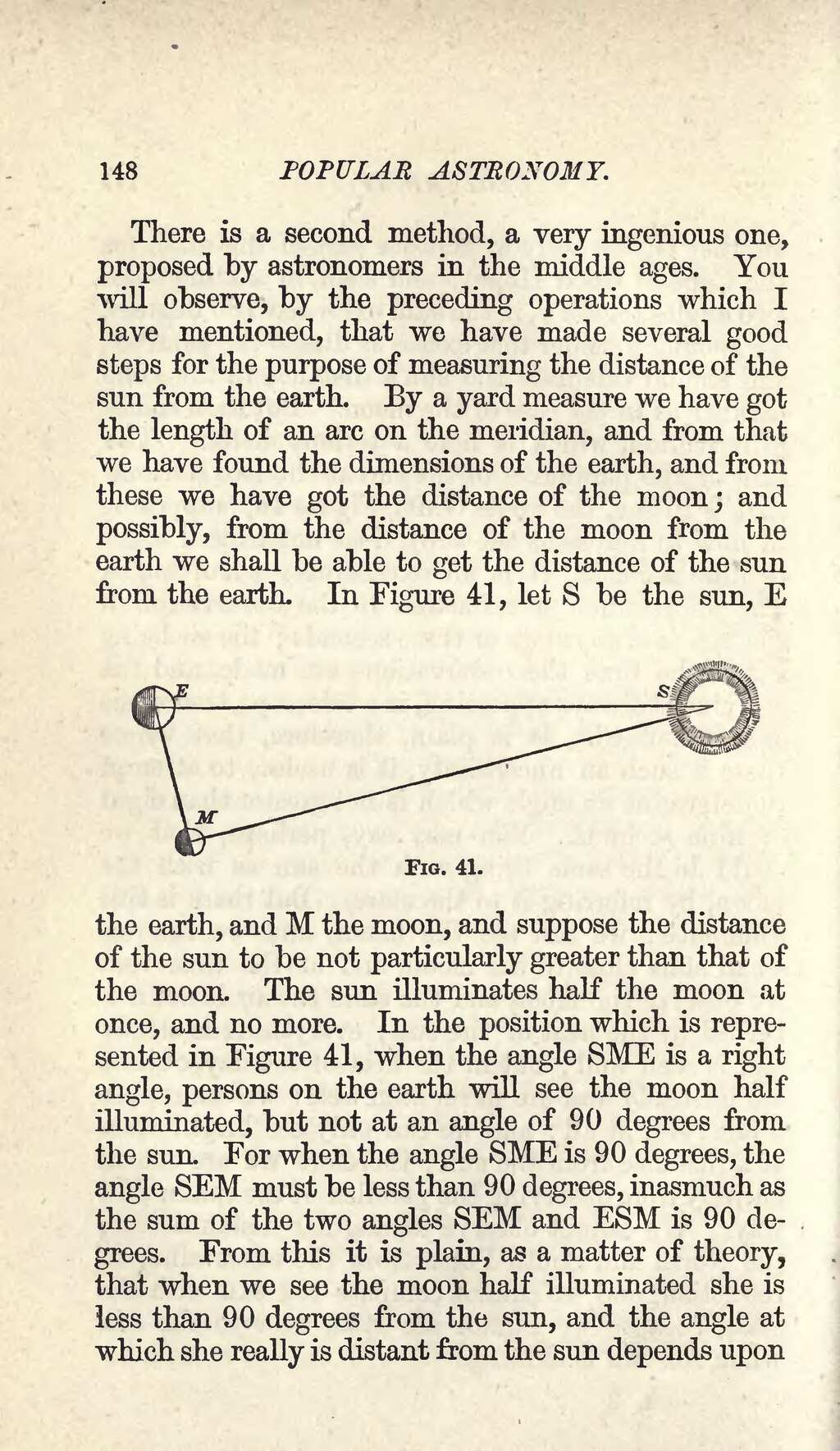There is a second method, a very ingenious one, proposed by astronomers in the middle ages. You will observe, by the preceding operations which I have mentioned, that we have made several good steps for the purpose of measuring the distance of the sun from the earth. By a yard measure we have got the length of an arc on the meridian, and from that we have found the dimensions of the earth, and from these we have got the distance of the moon; and possibly, from the distance of the moon from the earth we shall be able to get the distance of the sun from the earth. In Figure 41, let S be the sun, E

Fig. 41.
the earth, and M the moon, and suppose the distance of the sun to be not particularly greater than that of the moon. The sun illuminates half the moon at once, and no more. In the position which is represented in Figure 41, when the angle SME is a right angle, persons on the earth will see the moon half illuminated, but not at an angle of 90 degrees from the sun. For when the angle SME is 90 degrees, the angle SEM must be less than 90 degrees, inasmuch as the sum of the two angles SEM and ESM is 90 degrees. From this it is plain, as a matter of theory, that when we see the moon half illuminated she is less than 90 degrees from the sun, and the angle at which she really is distant from the sun depends upon

